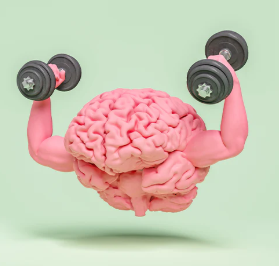Many people believe that staying fit requires long hours of intense workouts in a gym. While exercise is important, fitness does not have to dominate your schedule or require expensive equipment. By embracing simple strategies and integrating movement into your daily life, you can stay healthy, strong, and energetic without spending countless hours in a gym.
One of the most effective ways to maintain fitness is to focus on consistency rather than intensity. Short, regular sessions of physical activity often yield better long-term results than occasional extended workouts. For instance, dedicating just twenty to thirty minutes each day to exercise can significantly improve cardiovascular health, flexibility, and strength over time. This approach is particularly helpful for individuals with busy schedules who struggle to find large blocks of time for exercise.
Incorporating movement into daily routines is another powerful strategy. Activities like walking or cycling to work, taking the stairs instead of the elevator, or doing household chores can all contribute to overall fitness. These small but consistent actions add up over time, making it easier to meet your fitness goals without committing to structured gym sessions. For example, walking briskly for fifteen minutes during a lunch break or parking further away from your destination can increase your daily activity level significantly.
Bodyweight exercises are also a convenient and efficient way to build strength without needing a gym. Push-ups, squats, lunges, planks, and variations of these exercises engage multiple muscle groups at once and can be performed almost anywhere. A short, focused bodyweight routine completed two or three times a day can maintain muscle tone, improve posture, and enhance core strength. One of the benefits of these exercises is that they require minimal equipment, making it easy to fit fitness into your home or travel routine.
High-Intensity Interval Training, or HIIT, is another method that allows you to maximize results in a short amount of time. HIIT workouts alternate between brief bursts of intense activity and periods of rest or lower-intensity movement. Studies have shown that HIIT can improve cardiovascular health, burn calories efficiently, and boost metabolism. A typical HIIT session can last anywhere from fifteen to thirty minutes and still provide benefits comparable to longer, steady-state cardio workouts. HIIT is versatile and can incorporate running, jumping jacks, burpees, or cycling, making it easy to adapt to your preferred style of exercise.
Flexibility and mobility are often overlooked aspects of fitness, yet they play a crucial role in overall health. Stretching, yoga, or gentle mobility routines help prevent injuries, improve posture, and enhance muscle function. Even five to ten minutes of daily stretching can relieve tension, improve joint range of motion, and contribute to a sense of physical well-being. You do not need a dedicated studio or class; simple stretches at home or in a quiet space can be highly effective.
Nutrition also plays a vital role in staying fit without extensive gym sessions. A balanced diet rich in whole foods, lean proteins, fruits, vegetables, and healthy fats supports energy levels and muscle recovery. Staying hydrated, limiting processed foods, and moderating sugar intake complement your physical activity. Fitness is not just about exercise; it is a combination of movement, proper nutrition, and rest. Making mindful choices throughout the day can enhance the benefits of even short workouts.
Another helpful approach is to set achievable goals and track your progress. Goals do not need to be overly ambitious; they can be as simple as committing to ten minutes of stretching each morning or walking a certain number of steps daily. Tracking your activity, whether through a fitness app, journal, or wearable device, provides motivation and accountability. Celebrating small milestones can reinforce habits and make fitness a positive, rewarding part of your daily life.
Social support can make a significant difference in maintaining a fitness routine. Exercising with a friend, family member, or online community adds encouragement, accountability, and enjoyment. Group activities like walking clubs, cycling groups, or virtual fitness challenges offer structure and motivation without requiring hours of gym time. Sharing progress and celebrating achievements with others can help you stay committed and make fitness feel less like a chore.
Mindful movement is an approach that combines physical activity with awareness of the body and breath. Practices such as tai chi, gentle yoga, or mindful walking help reduce stress, improve balance, and foster a stronger connection between mind and body. These activities often take less time than traditional workouts but provide mental and emotional benefits that enhance overall well-being. Mindfulness encourages you to listen to your body, preventing overexertion and promoting sustainable fitness habits.
Rest and recovery are just as important as exercise. Even short workouts require time for muscles to repair and energy levels to reset. Prioritizing quality sleep, taking rest days, and allowing time for relaxation supports long-term fitness. Overtraining or neglecting recovery can lead to fatigue, injury, and decreased motivation. Balancing activity with rest ensures that your fitness routine is sustainable and enjoyable.
Technology can also be a valuable tool for staying fit without spending hours at the gym. Fitness apps, online workout videos, and wearable devices offer guided routines, progress tracking, and reminders to move throughout the day. Many apps provide short, effective workouts that can be done at home, allowing you to fit exercise into any schedule. Using these tools can make fitness accessible, structured, and adaptable to your lifestyle.
Ultimately, staying fit without spending long hours in the gym is about prioritizing movement, consistency, and balance. By integrating exercise into daily life, focusing on short but effective workouts, nourishing your body with wholesome foods, and allowing time for rest, you can maintain health and vitality without feeling overwhelmed. Fitness is not measured by the number of hours spent in a gym but by the habits and choices that support long-term well-being.
Even a few minutes of intentional activity each day can create a meaningful impact over time. The key is to make movement enjoyable, convenient, and sustainable. Whether it is a brisk walk around your neighborhood, a quick bodyweight routine, or a session of mindful stretching, each step contributes to a stronger, healthier body. Staying fit does not have to be complicated or time-consuming; it simply requires consistency, awareness, and a willingness to incorporate movement into everyday life.
By embracing these approaches, you can experience improved energy, strength, flexibility, and overall wellness without the need for extended gym sessions. Staying fit becomes not just a goal, but a natural part of your lifestyle that supports both physical and mental well-being. With simple, consistent actions, fitness is achievable for everyone, no matter how busy life may be.






